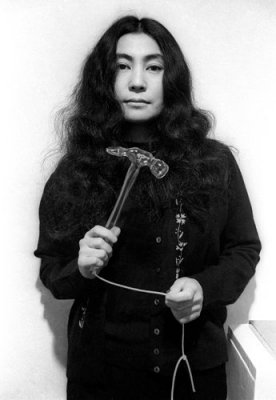
1–23 May 2009
Constellation
CLAY PERRY’s photographs of London’s avant-garde art scene in the 1960s,
shown together with works from the time
In the midst of 1960s ‘Swinging London’, Clay Perry was the photographer for the avant-garde art scene, documenting a constellation of the most innovative international artists of the period, including Yoko Ono, David Medalla, Liliane Lijn, Robert Rauschenberg, Sérgio Camargo, Gustav Metzger, Jesús Rafael Soto,
Takis and Mark Boyle.
Clay Perry became house photographer for the legendary Signals Gallery, initially known as The Centre for Advanced Creative Study. Signals founders were Paul Keeler and the young Filipino artist, David Medalla, together with critic Guy Brett, and artists Marcello Salvadori and Gustav Metzger. Perry photographed many of the artists in orbit around Signals and produced images for the gallery’s iconic publication, the Signals Newsbulletin, which brought together artists, writers and poets and provided a forum for experimental art of the time.
After exhibitions of sculpture and kinetic art at Keeler’s apartment in Cornwall Gardens, Signals moved to Wigmore Street, launching with an exhibition of ‘magnetic sculptures’ by the Greek artist Takis. Other exhibitions focussed on Brazilian artists such as Lygia Clark, Mira Schendel and Camargo who had come to Europe to escape the then repressive military regime in Brazil. As Guy Brett pointed out recently, ‘Signals was cosmopolitan, experimental and interdisciplinary’, and was from 1964 to 1966 ‘a major showroom of the international avant-garde’.
Perry recalls that ‘some of the most memorable works at Signals were David Medalla’s kinetic constructions installed on the balcony at Cornwall Gardens: particularly his now famous ‘bubble mobiles’. These vertical white boxes contained a small electric motor in a tub charged with bubble bath which created extraordinary bubble sculptures, the Cloud Canyons.
Constellation also includes Perry’s previously unpublished photographs of Yoko Ono’s 1967 exhibition Half-a-Wind at the Lisson Gallery. John Lennon backed her exhibition and also discreetly participated with a series of empty glass bottles that were shown on a high shelf labelled ‘J. L.’. Ono’s main installation, titled Half-a-Room, was a simulated apartment in which everything had been painted white and then cut in half: half a painting, half a cabinet, half a chair, half a teapot, and so on – half-objects suggesting the ability of memory to complete the physical presence of the whole object. David Medalla recalls that Ono ‘went around Portobello Road with a group of people and collected lots of furniture and cut each piece in half – I remember she had half a cake, I always wondered what happened to the other half – I think it was her best show.’ Ono herself has said that ‘it was so innately connected with my private life… I realized that there was a half empty space in my life. I’m presenting that to John. John’s filling the other half. That happened not only in the art dialogue, but it happened in my life. Isn’t that amazing?’
Clay Perry studied photography at Guilford School of Art, and first became involved with Signals in the summer of 1964. He later established a career as an editorial and advertising photographer for numerous publications. Perry says now that ‘Looking back on it all, I can’t help thinking how lucky we were. The whole ethos of the time was about creativity. Signals was ‘dedicated to the adventure of the modern spirit’ – this was very much part of the optimism of the time and something it was wonderful to have been part of.’
